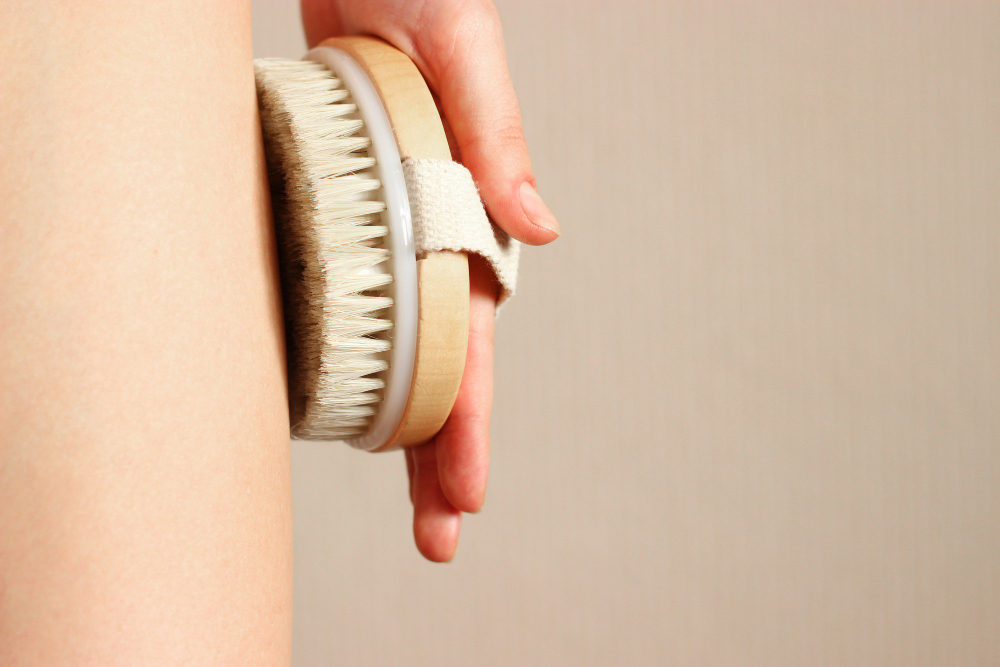How Dry Brushing Helps Lipedema

Lipedema is a challenging and often misunderstood condition, characterized by the build-up of painful, fibrotic fat that primarily affects the legs, hips, and sometimes arms. For those living with lipedema, seeking relief and management strategies is a top priority. While lipedema surgery can offer remarkable results, many individuals turn to complementary therapies to support their symptoms. One such therapy is dry brushing.
Curious about how this simple and non-invasive practice can help alleviate lipedema-related discomfort? Keep reading to discover the benefits of dry brushing, its potential role in lipedema management, and how you can incorporate it into your self-care routine.
What is Dry Brushing?
Dry brushing is a centuries-old skincare practice that involves using a firm-bristled brush to gently exfoliate the skin and stimulate the lymphatic system. Typically performed before bathing, the technique requires brushing the skin in upward, circular motions, starting from the feet and working toward the heart. Though often marketed for improving circulation and exfoliating dead skin cells, recent studies and anecdotal reports suggest dry brushing may also benefit those with lipedema.
What is Lipedema and Why is Lymphatic Health Important?
Before we jump into the benefits of dry brushing, it’s important to understand lipedema and its connection to the lymphatic system.
Lipedema is a chronic condition that affects an estimated 11% of women worldwide. It involves abnormal fat deposits that are resistant to diet and exercise, often leading to pain, bruising, swelling, and mobility challenges.
The condition is strongly linked to lymphatic dysfunction, where fluid build-up in the tissues exacerbates swelling and pain. This is why improving lymph flow and drainage is a key part of managing lipedema symptoms.
Dry brushing is thought to be an effective way to support lymphatic health, making it a valuable addition to your lipedema self-care plan.
Benefits of Dry Brushing for Lipedema
1. Stimulates the Lymphatic System
The lymphatic system plays a vital role in fluid regulation and the removal of toxins from the body. By gently brushing the skin, dry brushing helps promote lymph flow and drainage, which can reduce fluid retention and swelling in lipedema-affected areas.
For those managing lipedema, better lymphatic health means less discomfort and improved mobility.
2. Reduces Swelling and Discomfort
One of the hallmark symptoms of lipedema is swelling caused by poor lymphatic drainage. Dry brushing, when performed consistently, may help alleviate this issue by encouraging excess fluid to move out of the tissues.
Individuals with lipedema have reported feeling lighter and less puffy after regular dry brushing sessions.
3. Enhances Circulation
Dry brushing invigorates blood flow to the skin, which not only supports lymphatic drainage but may help improve overall circulation in the affected areas. Better circulation can contribute to healthier skin and tissue, particularly in areas impacted by lipedema's fibrotic fat build-up.
4. Provides Gentle Exfoliation
The physical act of dry brushing gently sloughs away dead skin cells, leaving your skin feeling soft and rejuvenated. For those with lipedema, exfoliation may also improve the appearance of the skin by minimizing roughness and dryness.
5. Supports Lipedema Surgery Results
If you’re considering or have undergone lipedema surgery, dry brushing can be an excellent addition to your recovery and maintenance routine. Regular brushing promotes lymph flow and circulation, which may help accelerate healing and minimize post-surgery swelling. As always, consult with your surgeon before starting any new therapy following surgery.
How to Dry Brush Safely and Effectively
1. Choose the Right Brush
Start with a medium or soft-bristled brush, especially if you have sensitive skin. Look for a long-handled brush to help reach tricky areas like your back or legs.
2. Brush Gently—but Consistently
Apply light to medium pressure while brushing. Avoid pressing too hard, as this can irritate the skin or worsen bruising in those with lipedema.
3. Use an Upward, Circular Motion
Always brush toward your heart to support lymphatic drainage. Start at your feet and work upward, covering your entire body.
4. Stay Consistent with Your Routine
Dry brushing works best when it’s part of a routine. Aim to brush your skin three to five times per week, preferably before showering or bathing.
5. Moisturize After Brushing
Follow your dry brushing session with a hydrating moisturizer or body oil to soothe your newly exfoliated skin.
Evidence Supporting Dry Brushing
While scientific research on dry brushing and lipedema is still evolving, many experts point to its potential benefits as part of a holistic lipedema management plan. For example, boosting lymphatic flow is well-documented as an essential component of addressing swelling and inflammation, two major challenges in lipedema.
Additionally, patients and practitioners alike have reported improved well-being and reduced discomfort from incorporating dry brushing.
A Holistic Approach to Lipedema
Dry brushing is just one of the many tools available for managing lipedema. When combined with other therapies like compression garments, dietary changes, and physical activity, it can make a meaningful difference in both symptom relief and overall quality of life.
For those seeking long-term results, lipedema surgery offers a targeted solution. Key surgical procedures, such as lymph-sparing liposuction, focus on safely removing the abnormal fat tissue without damaging the lymphatic system.
If you’re ready to explore your surgical options, our team at Byrd Lipedema Surgery Center is here to guide you every step of the way.
Take the Next Step Toward Relief
Living with lipedema is challenging, but effective treatments and management strategies are within reach. Whether you're looking to try dry brushing or considering lipedema surgery, taking action today can lead to big improvements tomorrow.
At Byrd Lipedema Surgery Center, we specialize in comprehensive and compassionate care for lipedema patients. Schedule a consultation with our experts to learn how we can help you achieve lasting relief.